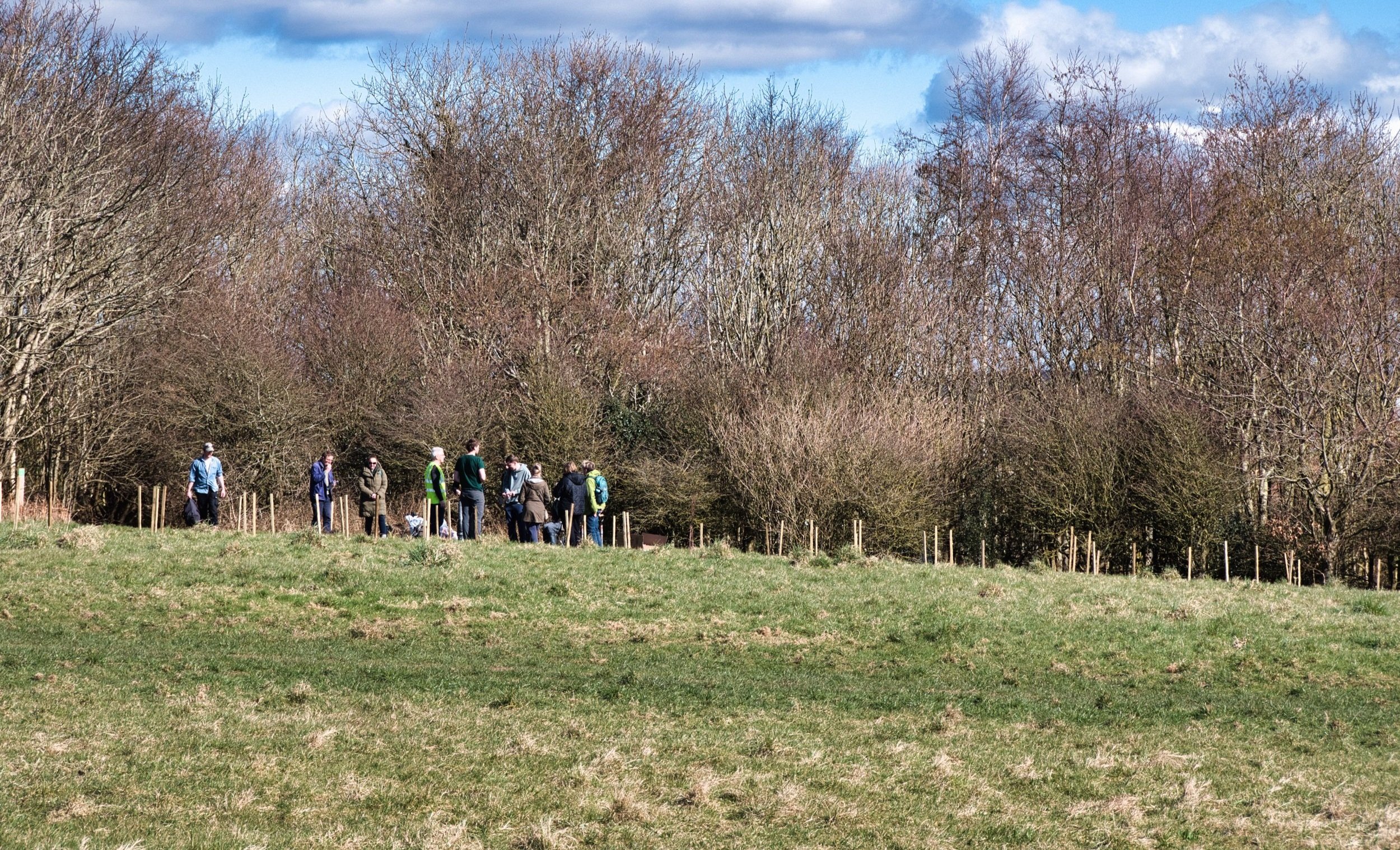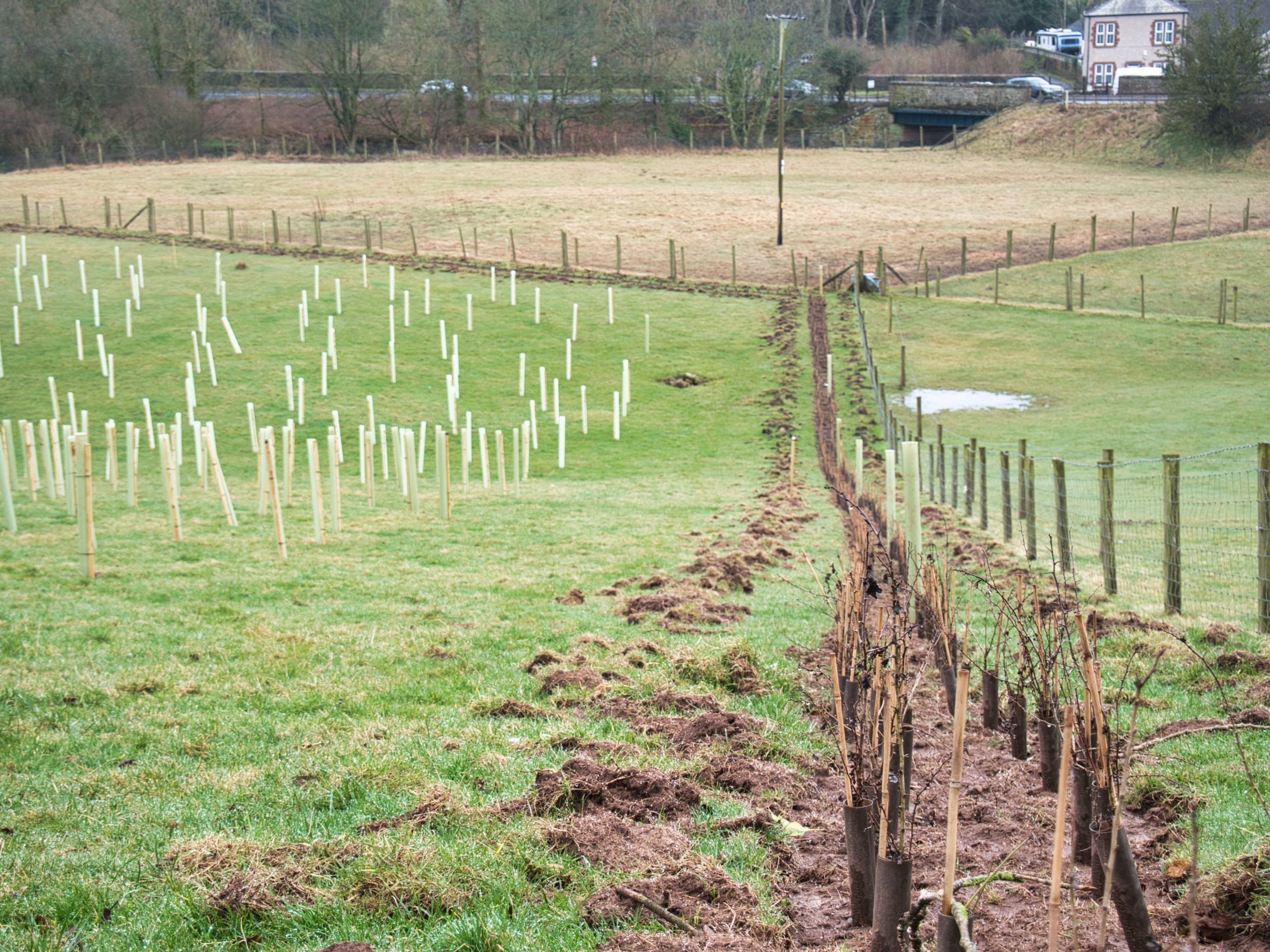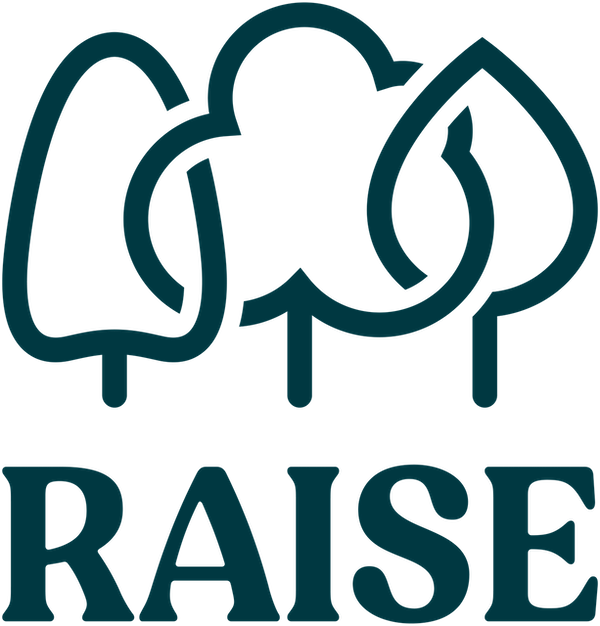Forest Plan / Delivery Strategy / Monitoring & Evaluation

Monitoring & Evaluation
Cumbria Community Forest (CCF) will be developed with an ethos of continuous improvement. Agile management techniques will be used to iteratively set strategic goals and monitor and evaluate progress.
This will enable effective and innovative responses to an evolving context. For example, Raise will develop annual ‘Objectives and Key Results’ (OKRs) [AA] to deliver the CCF 5-year Action Plan.
Monitoring
An iterative, cyclical process, outlined in Table 8, will be used to monitor progress and evaluate performance against both the CCF 5-year Action Plan and OKRs, report to key stakeholders and adapt to an evolving context.
Table 8: Adaptive management approach for Cumbria Community Forest Plan delivery
| Frequency | Action | Who By |
|---|---|---|
| Monthly | Review OKRs – in terms of progress against key results, blockers to progress and required amendments due to a change in understanding or context. |
Raise |
| Quarterly | Review progress against actions within our 5-year Action Plan, based on progress of annual OKRs. |
Raise, reporting to stakeholders |
| Annually | Review progress towards 5-year Objectives using identified indicators and methods (see Table 9). Share in CCF Annual Report.
Evaluate performance, blockers to progress, mitigating actions and indicators. Review and update Forest Plan Delivery Strategy (5-year Action Plan, Funding Strategy/Plan, Monitoring & Evaluation Framework/Plan) as required, based on learning and evolving context. Confirm Annual OKRs in reference to revised 5-year Action Plan. |
Raise, reporting to stakeholders |
[AA] OKRs are a goal setting framework used to define goals and their measurable outcomes as a measure of progress.

Evaluation
What will be evaluated, by whom?
The impact of the CCF Plan and progress of its delivery will be holistically evaluated by a key Research Partner, supported via the CCF governance. Purposes of this evaluation include transparency and accountability to communities, funders and partners; informing future iterations of the CCF Forest Plan; and demonstrating our impact as part of the ECF network.
Raise will explore research partnerships and formalise them where appropriate. Research partnerships will generate processes to understand and communicate the social impacts of CCF and its engagement programmes, focusing on the wellbeing of Cumbrian individuals and the relative prosperity levels experienced by Cumbrian communities.
What tools and data will be used?
Raise gathers a range of data on CCF woodland creation each year, including area and location of woodland established, the numbers and species of trees used in each woodland creation scheme, the funding and social outcomes associated with each scheme, and feedback from applicants on their experience. Raise also produces and archives communications assets such as photographs, news articles and case studies which document the process of creating Cumbria Community Forest and those people involved. This data is analysed and evaluated annually, and relevant details will be shared in a public CCF Annual Report. Improvements and adjustments will be made as required based on this analysis and evaluation, following the cyclical approach outlined above in Table 8.
This information is fed, via England’s Community Forests, into national datasets such as the Forestry Commission’s National Forest Inventory [BB] and Liverpool John Moores University’s Natural Capital Analysis [CC]. It can be shared with local Partners to measure and monitor progress towards shared objectives. For example, relevant woodland creation data may be shared with key delivery partners of Cumbria’s Local Nature Recovery Strategy to support monitoring and delivery of that strategy.
To monitor the impacts of CCF engagement programmes, a range of evaluation methods will be employed on a project-by-project basis. They will blend in-person review with participants, self-reflective feedback, and review with referral/link organisations (including landowner, school, council, health, cultural and employability partners). Evaluation meetings with partners will support Raise to iteratively develop their engagement offer through the CCF 5-year Action Plan.
An indicative monitoring framework is proposed in table 9 below. It suggests indicators of progress towards each 5-year objective of this Plan. Where known, the methods of data collection and role responsible for recording the data is identified. This monitoring framework will continue to be developed collaboratively with delivery partners. It will be reviewed and updated regularly as part of the cyclical adaptive management process outlined in table 8 above.
[BB] Information about the size, distribution, composition and condition of our forests and woodlands, and the changes taking place in the woodlands through time.
[CC] Economic valuation to quantify the benefits generated by Community Forest interventions in England

Indicative monitoring framework
If you are on mobile, you can download a mobile friendly spreadsheet here.
Table 9: Indicative monitoring framework - suggested indicators for monitoring progress towards 5-year objectives
| Objective (five-year) | Indicator(s) of progress | Method / Who |
|---|---|---|
| Objective 1: Plant at least 500 hectares of trees and woodland prioritising areas of maximum ecological, social and climate impact | Tree and Woodland Cover (total hectares, % land cover) ECF core metric 1 Tree and Woodland Establishment by CCF (total hectares, total number of trees) ECF core metric 2 |
Internal log (Raise Programme Manager) & GIS analysis (Crossbill Forestry) |
| Objective 2: Restore 50 hectares of existing unmanaged woodland to bring into sustainable management | Woodland Management (% woodland sustainably managed, hectares of woodland restored by CF). ECF core metric 3 |
Internal log (Raise Programme Manager) & GIS analysis (Crossbill Forestry) |
| Objective 3: Increase the number of people living within a 15-minute walk from accessible treescapes and woodland, prioritising areas under-served by Green Infrastructure | Community Forest Access Standard (additional households with minimum 0.1 hectare accessible woodland within 500m) [DD] Progress of strategic sites identified, in development, or delivered with key enabling partners |
LJMU Natural Capital Analysis (Liverpool John Moores University via ECF network)
CCF planting data and GIS analysis (Crossbill Forestry) |
| Objective 4: Meaningfully engage with and involve 7,500 people in the design, planting and maintenance of Cumbria Community Forest | Public / Community Engagement (number of people directly engaged in core work of CCF through tree planting and other activities) ECF core metric 4 Qualitative feedback from people involved in designing, planting and maintaining CCF treescapes. Documentation of engagement with design, planting and maintenance of CCF treescapes. |
Internal log, surveys (Raise Programme Manager)
Raise news, films, photographs, press articles (Raise Communications role) |
Objective 5: Design accessible treescapes through co-creation processes with local communities to understand and address barriers to access experienced by different community groups, so all may benefit |
Barriers addressed or removed as shown through documented examples / case studies (e.g. flagship sites) | Report / Case studies (Raise Communications role) |
Objective 6: Enable communities to create their own community woodland – owned and/or managed and utilised by local people |
Effectiveness of resources and support available to communities | Local surveys and qualitative feedback |
| Objective 7: Increase the capacity and skills of the woodland workforce in Cumbria, in support of supplying, planting, maintaining and restoring community forest sites; and supply of trees and materials | Number of training and employment opportunities supported or provided (e.g. apprenticeships, work experience, mentoring, shadowing, training) Qualitative feedback from woodland workforce (including suppliers, contractors, trainees, apprentices). |
Internal log, surveys |
Objective 8: Develop practice of transformative inclusivity through woodland engagement programmes |
Programme evaluation methods including in-person review with participants and holistic review with referral / link organisations | Internal log of outcomes data (Raise Engagement Programme Lead) |
| Objective 9: Develop ‘flagship sites’ showcasing our principles | Case studies of flagship woodland creation sites which evidence and explore how they enact and showcase our principles |
Case studies (Raise Communications role) |
Objective 10: Research, publish and share our learning and best practices relevant to neurodivergence and woodland |
Wellbeing and social-emotional [EE] development of Cumbrian individuals, relative prosperity levels felt by Cumbrian communities | Key Research Partner, Raise team (role TBC) |
[DD] England’s Community Forest Access Standard is a more demanding standard than the basis for our target setting in Goal 2. An area of publicly accessible woodland within 500m of households would typically be a shorter distance than a 15-minute walk (around 4km).
[EE] The term “social-emotional” or “socio-emotional” describes the two-way connection between a person’s social and emotional experiences, or outcomes. Social outcomes can lead to emotional outcomes, for example a negative interaction with friends can lead to despair. Likewise, emotional outcomes can lead to social outcomes, for example someone acts confidently and makes more friends as a result (Geher, 2023, What Exactly Does Social-Emotional Mean?) Social-emotional development impacts someone’s ability to cope with challenges, connect with others, resolve conflicts and maintain bonds, across all aspects of their life. (Neurolaunch editorial team, 2024, Socio-Emotional Development: Understanding and Nurturing Emotional Growth)

